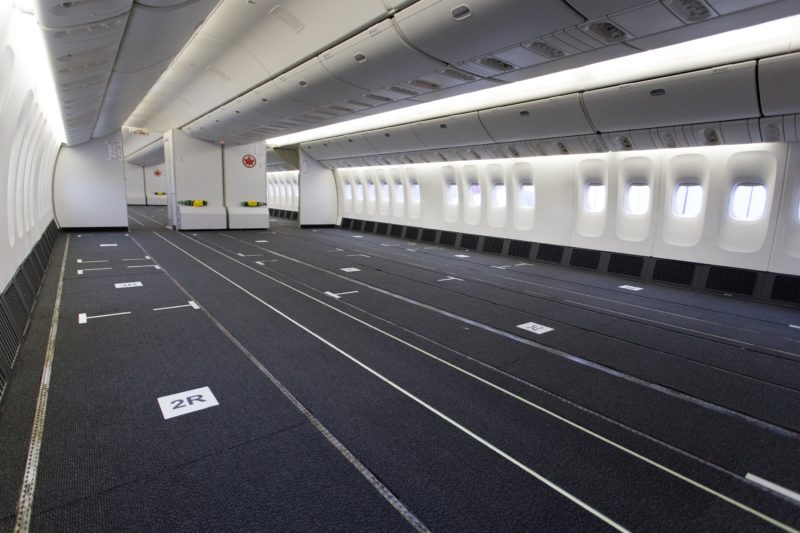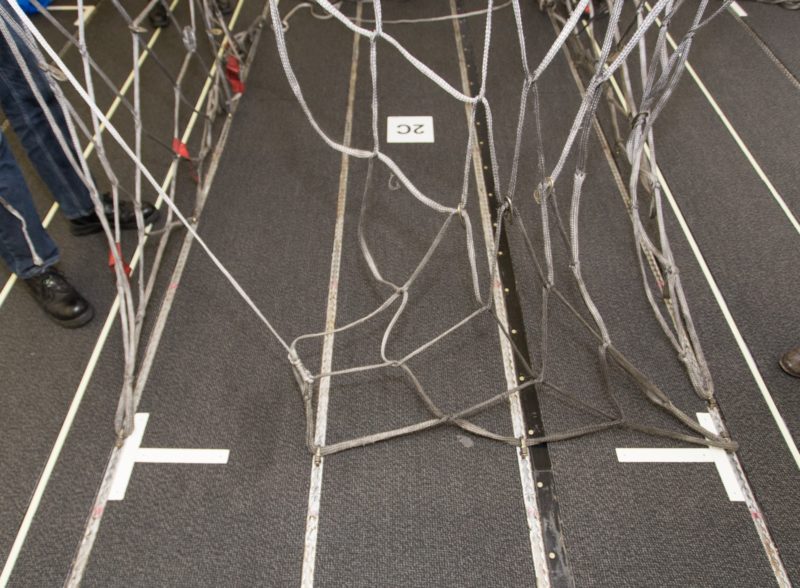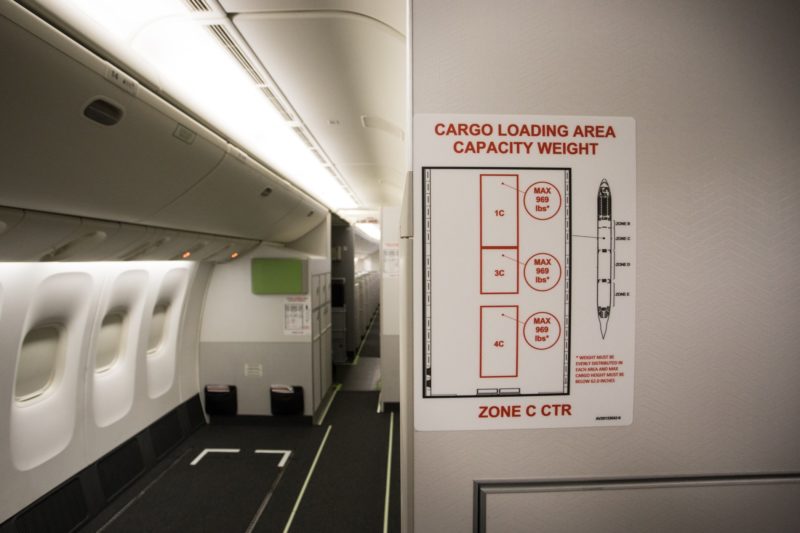Whilst the passengers might be staying at home for, Air Canada is making use of some of its Boeing 777-300ER fleet for cargo purposes.
But to make space on the main deck of the aircraft, the seating has been what Air Canada called “reconfigured”
I would call it removing the the seating from the main deck.

When you take out the seats from a Boeing 777-300ER, there’s a lot of space – Image, Air Canada
The first Boeing 777-300ER has already been reconfigured, with the second and third aircraft to completed shortly. The reconfigured aircraft can carry 89.63 tonnes, the equivalent of up to 9 million medical masks.
The three Boeing 777-300ER aircraft are being converted by Avianor, an aircraft maintenance and cabin integration specialist, at its Montreal-Mirabel facility.
Avianor developed a specific engineering solution to remove 422 passenger seats and designate cargo loading zones for light weight boxes containing medical equipment and restrained with cargo nets.

Installing the cargo nets – Image, Air Canada

The cargo net modification – Image, Air Canada
This modification has been developed, produced and implemented within six days.
Through its cargo division, Air Canada has been using mainline aircraft that would otherwise be parked to operate cargo-only flights. The aircraft on these flights carry no passengers but move in their baggage holds time-sensitive shipments, including urgent medical supplies, and goods to support the global economy.

Your cargo goes here – Image, Air Canada.
So far, Air Canada has operated 40 all-cargo flights since 22nd March and plans to operate up to 20 all-cargo flights per week using a combination of the three newly converted Boeing 777s, Boeing 787s and Boeing 777s. This is in addition to the current flight operating to London, Paris, Frankfurt, Hong Kong.
In Quotes
Tim Strauss, Vice President – Cargo at Air Canada said
“Bringing critical medical and other vital supplies rapidly to Canada and helping distribute them across the country is imperative to combating the COVID-19 crisis. The transformation of the Boeing 777-300ERs, our largest international wide-body aircraft, doubles the capacity of each flight and will enable more goods to move more quickly,”
Richard Steer, Senior Vice President – Air Canada Operations.
“The rapid transformation of some of our aircraft to meet cargo demand reflects our ability to maximize our fleet assets quickly when these aircraft would otherwise be parked. Air Canada’s engineering team worked around the clock to oversee the conversion work, and with Transport Canada to ensure all work was certified as tasks were completed. The next two aircraft are on track to be completed and will be in operation within the coming days,”
Welcome to Economy Class and Beyond – Your no-nonsense guide to network news, honest reviews, with in-depth coverage, unique research as well as the humour and madness as I only know how to deliver.
Follow me on Twitter at @EconomyBeyond for the latest updates! You can also follow me on Instagram too!
Also remember that as well as being part of BoardingArea, we’re also part of BoardingArea.eu, delivering frequent flyer news, miles and points to the European reader.